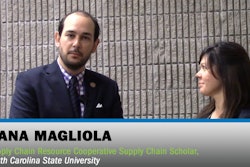Risk is a hot topic in the boardroom. The consulting firm Protiviti recently released a report on its fourth annual survey of global boards of directors and corporate executives, in conjunction with North Carolina State University's Enterprise Risk Management Initiative. Interestingly, half of the top 10 risks highlighted in the survey have direct implications for engineering:
- Regulatory changes. Will products need to be redesigned to comply?
- Poor economic conditions. How can we reduce manufacturing costs?
- Rapid speed of disruptive innovations. Are we staying ahead of the innovation curve?
- Identifying/escalating risk issues. Can our engineers find and fix problems fast enough?
- Sustaining customer loyalty. Can our products keep up with fickle customer preferences?
Just those five categories of risk are enough to keep Engineering leaders up at night. But one challenge in thinking about how to deal with these kinds of "macro-risks" is not losing focus on the creeping dangers – or hidden risks – that can degrade performance on a daily basis and ultimately prevent us from successfully managing the more obvious risks associated with regulatory changes, economic turmoil and so on.
In the pages of this special edition of Supply & Demand Chain Executive (SDCE), we explore one of those hidden hazards threatening engineering's performance: information risks.
We kick off the topic with an overview of the information challenges facing the technical enterprise today. In the article "Take Risk out of the Information Equation," starting on page 5, Chad Hawkinson, head of the Engineering and Product Design business at IHS Inc., describes the information risks that threaten engineering productivity and the implications for the broader organization. He also suggests a framework for how an enterprise can mitigate these risks and increase productivity for their technical professionals.
The article "Catch the Knowledge Wave" (page 7) dives deeper into the topic, tying boardroom and CEO concerns directly to the technical enterprise and exploring how information overload and other knowledge-based challenges are hampering engineering leaders from meeting their business goals. The article then proposes a path forward for organizations looking to throw their engineers a life ring to pull them out of the information tsunami and ultimately drive increased profitability and growth through increased engineering productivity.
In the article "Mastering Technical Knowledge Discovery" (page 12), author John Buchowski offers his own perspective on how leading engineering organizations can leverage their past experience to drive future gains. Buchowski tees up a fascinating case study involving NASA (page 14), which was challenged to tap into the storehouse of know-how accumulated within the U.S. space agency over decades of sending rockets —and people—into orbit and beyond.
Finally, the article "Winning the Knowledge Race" (page 16) highlights the results of a recent SDCE survey that exposed the looming risks associate with demographic changes occurring in the engineering workforce, and the article "Optimizing Internal Standards..." (page 19) speaks to the challenge of adapting to new economic conditions, describing how engineering organizations in one specific industry vertical—energy—are overcoming the risk of doing things the way they have always been done.
As the Protiviti-NCSU reports notes, boards are looking to management to effectively identify and mitigate the leading risks looking over the enterprise. Engineering leaders considering how to respond to these imperatives might do well to consider the impact of the hidden information risks described in this special issue—and how best to overcome these creeping challenges by deploying best-in-class technical knowledge management solutions.



















